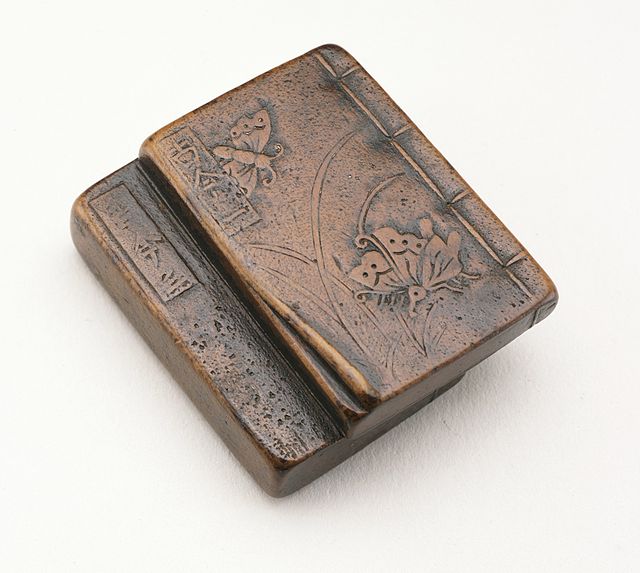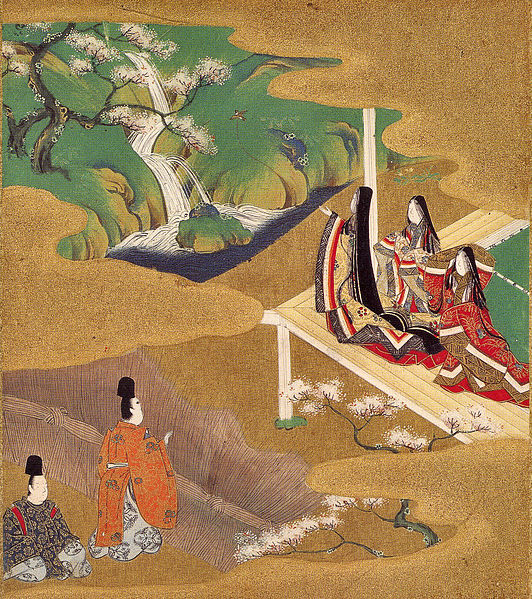Murasaki Shikibu was a Japanese novelist, poet and lady-in-waiting at the Imperial court in the Heian period. She is best known as the author of The Tale of Genji, widely considered to be one of the world's first novels, written in Japanese between about 1000 and 1012. Murasaki Shikibu is a descriptive name; her personal name is unknown, but she may have been Fujiwara no Kaoriko (藤原香子), who was mentioned in a 1007 court diary as an imperial lady-in-waiting.
Designated one of the One Hundred Poets, Murasaki is shown dressed in a violet kimono, the color associated with her name, in this Edo period illustration.
Fujiwara no Michinaga (19th century monochrome illustration by Kikuchi Yōsai) became extremely powerful during Murasaki's lifetime.
A Tosa-school mid- to late 17th century yamato-e of Heian courtiers by Tosa Mitsuoki, shows women dressed in jūnihitoe and with floor-length hair.
A Tosa Mitsuoki illustration of Heian court women in the winter, late 17th century
Japanese poetry is poetry typical of Japan, or written, spoken, or chanted in the Japanese language, which includes Old Japanese, Early Middle Japanese, Late Middle Japanese, and Modern Japanese, as well as poetry in Japan which was written in the Chinese language or ryūka from the Okinawa Islands: it is possible to make a more accurate distinction between Japanese poetry written in Japan or by Japanese people in other languages versus that written in the Japanese language by speaking of Japanese-language poetry. Much of the literary record of Japanese poetry begins when Japanese poets encountered Chinese poetry during the Tang dynasty. Under the influence of the Chinese poets of this era Japanese began to compose poetry in Chinese kanshi); and, as part of this tradition, poetry in Japan tended to be intimately associated with pictorial painting, partly because of the influence of Chinese arts, and the tradition of the use of ink and brush for both writing and drawing. It took several hundred years to digest the foreign impact and make it an integral part of Japanese culture and to merge this kanshi poetry into a Japanese language literary tradition, and then later to develop the diversity of unique poetic forms of native poetry, such as waka, haikai, and other more Japanese poetic specialties. For example, in the Tale of Genji both kanshi and waka are frequently mentioned. The history of Japanese poetry goes from an early semi-historical/mythological phase, through the early Old Japanese literature inclusions, just before the Nara period, the Nara period itself, the Heian period, the Kamakura period, and so on, up through the poetically important Edo period and modern times; however, the history of poetry often is different from socio-political history.

Edition of the Kokin Wakashū anthology of classic Japanese poetry with wood-carved cover, 18th century
Illustration of the "32 Persons of Different Occupations Poetry Competition", 1494
Book of Odes Dainembutsuji, commentary fragment (Shijing commentary fragment, 毛詩鄭箋残巻, mōshi teisen zankan). Before 1185.
Sugawara no Michizane is revered as the god of learning, as seen on this ema at a Shintō shrine.








